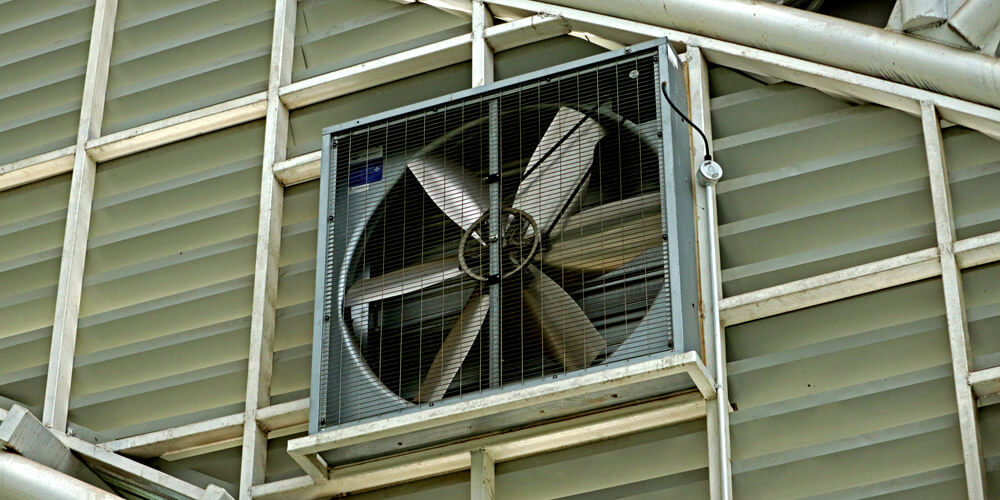Industrial exhaust fans are crucial in maintaining a healthy and productive working environment. They are designed to improve air quality, regulate temperature, and control moisture and pollutants. In this blog post, we will explore the functionality of industrial exhaust fans, their benefits, key considerations for installation, and the importance of regular maintenance.
The Functionality of Industrial Exhaust Fans

Industrial exhaust fans draw out stale and polluted air from enclosed spaces and replace it with fresh air. These fans are typically mounted on walls or roofs and are equipped with powerful motors and blades. As the fans rotate, they create a negative pressure environment, pulling out unwanted air and promoting air circulation.
The Benefits of Industrial Exhaust Fans
Industrial fans offer numerous benefits in industrial settings. Here are some key advantages:
Temperature Regulation
By extracting hot air and introducing cooler air, industrial exhaust fans help regulate temperatures, creating a comfortable working environment for employees.Moisture Control
In areas prone to high humidity or moisture buildup, exhaust fans prevent condensation, reducing the risk of mold, mildew, and equipment damage.Pollutant Removal
Industrial processes often release harmful gases, fumes, or dust particles. Exhaust fans effectively remove these pollutants, maintaining clean and safe air quality.Energy Efficiency
Modern industrial exhaust fans are designed to be energy-efficient, reducing power consumption while providing adequate ventilation.
Key Considerations for Industrial Exhaust Fans
When selecting and installing industrial exhaust fans, it's essential to consider the following factors:
Size and Capacity
Choose fans with appropriate size and capacity based on the space size and air volume to be circulated.Energy Efficiency
Look for fans with high energy efficiency ratings to minimize electricity usage and reduce operational costs.Noise Levels
Consider the noise levels produced by the fans, especially if they will be installed in areas where noise can be a concern.Proper Ventilation Design
Ensure that the ventilation system, including the placement and configuration of exhaust fans, is appropriately designed to optimize airflow and effectiveness.
Maintenance and Care of Industrial Exhaust Fans

Regular maintenance and care of industrial exhaust fans are crucial to ensure optimal performance and longevity. Here are some essential steps to follow:
1. Clean the Blades
Regularly clean the fan blades to remove dust and debris impeding airflow.
2. Check the Motor and Bearings
Inspect the motor and bearings for signs of wear and tear. Lubricate as needed to ensure smooth operation.
3. Clean or Replace Filters
If your exhaust fan has filters, clean or replace them regularly to maintain efficient pollutant removal.
4. Inspect Belts and Pulleys
Check belts and pulleys for tension and wear. Replace any worn-out parts to prevent breakdowns.
5. Regular Inspections
Conduct periodic inspections to identify any issues early on and address them promptly.
Pros
- Removes pollutants, dust, fumes, and harmful gases from industrial environments.
- Helps maintain cooler temperatures by expelling hot air, reducing the need for heavy air conditioning
- Prevents condensation and mold growth by controlling humidity levels.
- Helps meet workplace safety and air quality standards required by health and labor authorities.
Cons
- Large exhaust fans may consume significant power, increasing operational costs.
- Large exhaust fans may consume significant power, increasing operational costs.
Conclusion
Industrial exhaust fans are indispensable for maintaining a healthy and productive industrial environment. These fans create a safer and more comfortable workspace by improving air quality, regulating temperature, and removing pollutants. Choosing the right fan, considering essential factors, and performing regular maintenance will ensure optimal performance and long-term benefits. Invest in industrial exhaust fans today to enhance the well-being of your workplace and its occupants.
